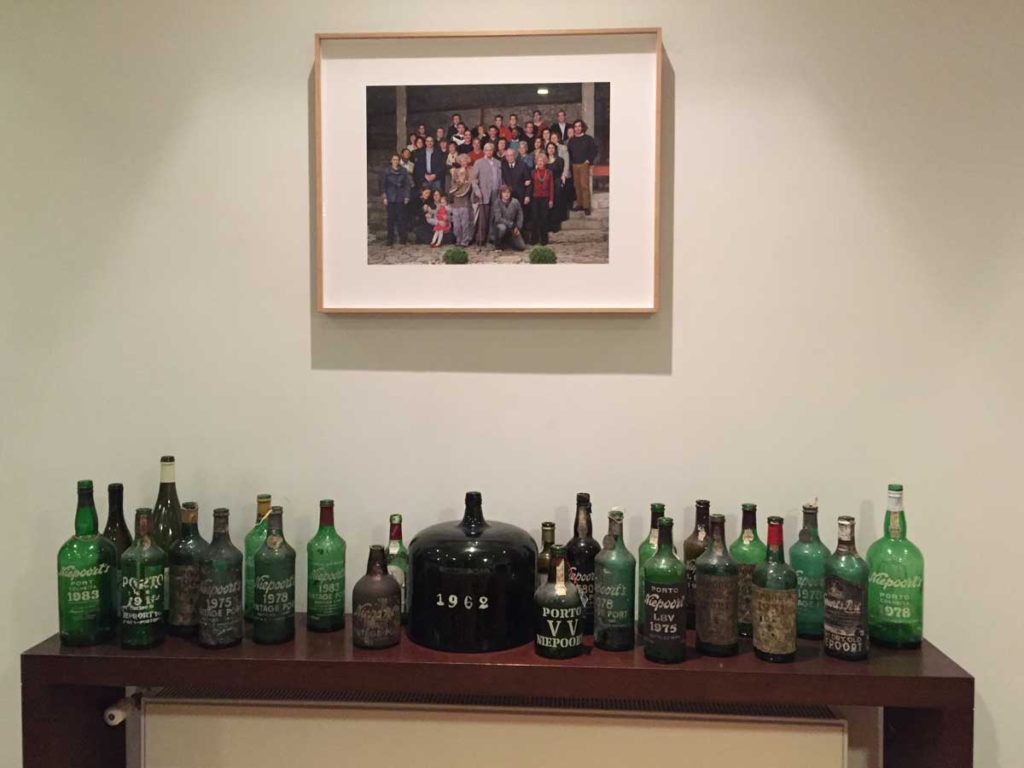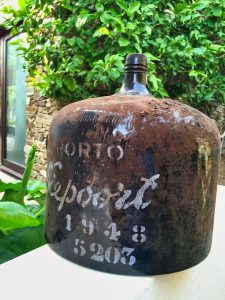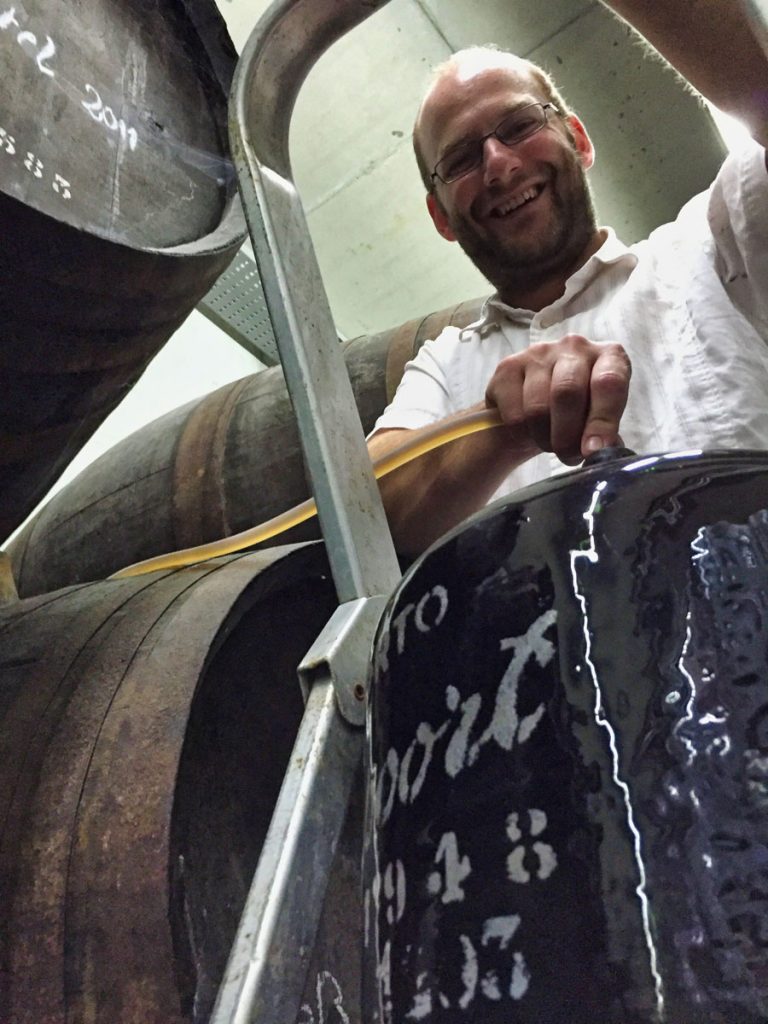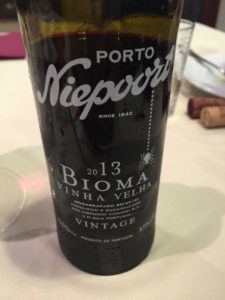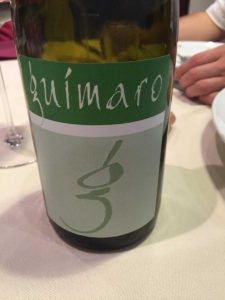It was a sunny afternoon in Portugal’s Douro Valley when I headed off to visit one of the most unique producers in the Douro Valley, Niepoort. I was going to meet with with Frederick Blas, who was working there during harvest. Frederick and I know each other from the For The Love Of Port forum, and we bumped into each other a couple of times when I’ve been in Portugal on the Harvest Tours. I connected with Frederick prior to the trip, and planned to just go enjoy the day there at Niepoort, and join Frederick and the staff for dinner.
Niepoort is a Dutch producer that was started in 1842. It is managed by Winemaker Dirk Niepoort, who is the fifth generation of Niepoort’s to run the business and a Renaissance Man when it comes to producing wines and Ports in the Douro. He always seems to have some interesting wine projects going on, both on the Port and non-Port side of his business.
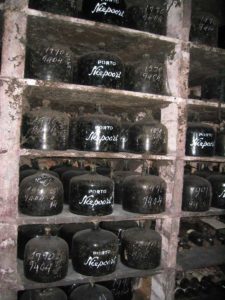
Niepoort is famous for being one of the only producers with stocks of old Garrafeira Ports – Ports that are aged in glass demijohns – and who in the world would produce a Riesling in the Douro Valley? Oh yeah, Dirk.
Until the late 1980s, Niepoort did not own any vineyards but rather had contracts to buy grapes from farmers in the area to produce their wines. In the late 1980s they acquired Quinta do Carril, Quinta do Passadouro, and my current destination: Quinta de Nápoles.
The current facilities at Quinta de Nápoles were completed in 2007, and they stand out among the sloped, green terraces of vines. It is a beautiful facility and sits just off the confluence of the Tedo and Douro Rivers.
I have visited Niepoort many times, though usually as part of the tour, and usually with planned tastings, dinners, and tours of the Quinta. This trip would be more casual, without any plans, with time to just relax and enjoy my last few days in Portugal.
When I arrived, Frederick was there to greet me, and after saying a quick hello to Dirk Niepoort and a few of the staff that I’d met on previous trips, Frederick and I decided to take a walk up to the top of the property – something that I’d never done before.

We spent the next two hours walking the hills and vineyards, and I got to see some of the old parts of the property, as well as some spectacular views from high up on the hills. There were several ancient, abandoned buildings – some with roofs that have caved in – I couldn’t help but to think about the history of this place and who might have lived and worked in those buildings.
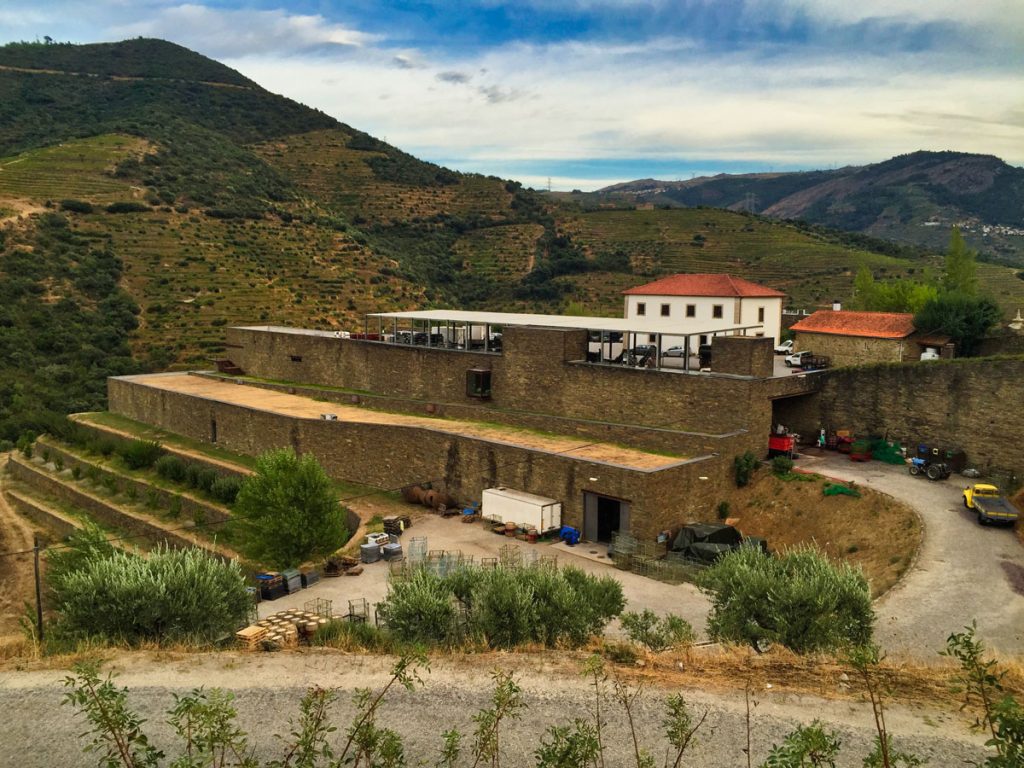
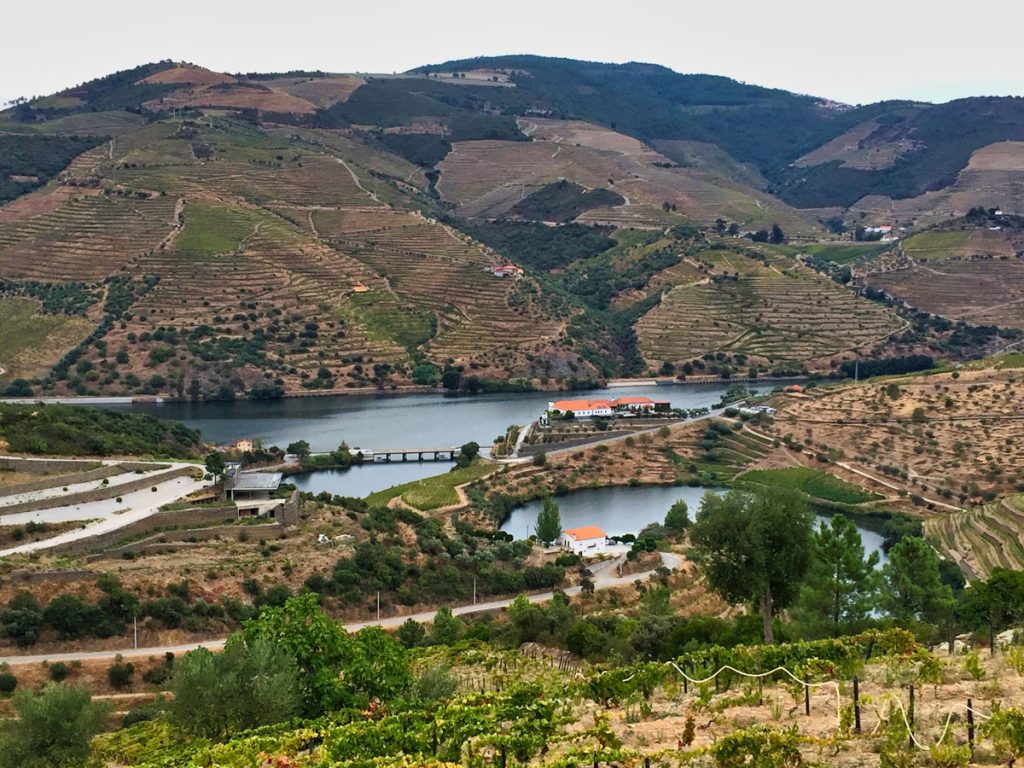
When we returned down to the main building, Frederick told me that he had been working on a project to test the aging of some white Port in one of the old glass demijohns that Niepoort uses to make its rare Garrafeira style of Port.
Garrafeira Ports are Ports that are usually aged in wood for three to six years and are then moved to large glass bottles (referred to as demijohns) to continue their aging. This process produces a smooth, well-integrated Port, and there are not a lot of producers still making this style of Port wine. It’s not easy to come by these ancient German hand-blown glass containers!
For the experiment Frederick was working on, he had chosen an empty Niepoort demijohn that previously held a 1948 Garrafeira Port, and I helped him fill it from a cask of Niepoort White Port (made sometime in the late 2000s). The plan was to age the White Port in the demijohn for a decade or so and see how it turns out.
|
|
|
Frederick slowly filled the demijohn from the barrel, then carefully inserted a cork to seal it up. “Now, we wait a decade” Frederick joked. I help him carry the demijohn up to one of the offices, worried the whole time about dropping this old glass demijohn, and was relieved when we gently set it down on the floor next to some other demijohns. [Sadly, I heard later from Frederick that the demijohn cracked, putting a quick end to the experiment.]
The sun had set, and the evening was upon us, so Frederick and I went down to the dining room and joined the Niepoort staff for dinner. I always love these opportunities to step away from the tour-the-vineyards types of experiences to taste some wines and experience a little bit of the behind the scenes of the Quintas. It was fun to experience the sense of camaraderie the staff had, enjoy some nice Portuguese cooking and wines, and to relax and reflect on the day’s visit to Niepoort.

2009 Niepoort Crusted Port – Bottled in 2011. Rich, dark purple in color. Red fruit on the nose. Pomegranate and blueberry on the palate with firm tannins. Medium-long finish with good balance. 91 points. firm tannins. 9/26/2016
2013 Niepoort Bioma Vinha Velha Vintage Port – Impenetrable dark purple in color with vibrant purple on the edges. The nose is a little subdued due to the bottle being a little chilled down. Surprisingly balanced tannins and approachable fruits on the palate. Drinkable now, but will likely improve with age. 92 points. 9/26/2016
